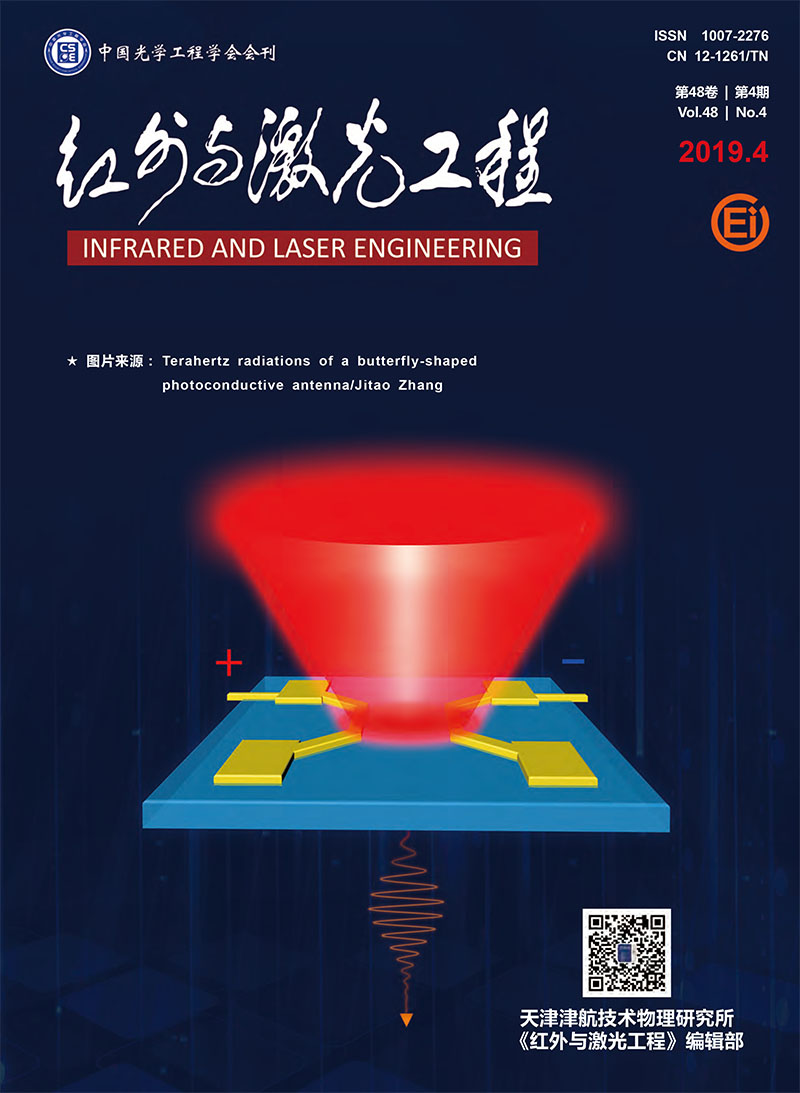Lou Kangping, Zhao Baiqin. Using multiple absorption peaks to lower DPSSL temperature control power dissipation[J]. Infrared and Laser Engineering, 2019, 48(4): 405004-0405004(5). doi: 10.3788/IRLA201948.0405004
| Citation:
|
Lou Kangping, Zhao Baiqin. Using multiple absorption peaks to lower DPSSL temperature control power dissipation[J]. Infrared and Laser Engineering, 2019, 48(4): 405004-0405004(5). doi: 10.3788/IRLA201948.0405004
|
Using multiple absorption peaks to lower DPSSL temperature control power dissipation
- 1.
Institute of Semiconductor,Chinese Academy of Sciences,Beijing 100083,China;
- 2.
University of Chinese Academy of Sciences,Beijing 100049,China
- Received Date: 2018-12-10
- Rev Recd Date:
2018-12-29
- Publish Date:
2019-04-25
-
Abstract
The operating wavelength of a semiconductor laser(LD) varies with temperature. Temperature control of a LD was a common method of extending the normal operating temperature range of an all-solid-state laser(DPSSL). However, commonly used methods have large volume, high energy consumption and low efficiency in the wide temperature range of -50℃ to 70℃. The wavelength drift coefficient of the GaAs quantum well laser is 0.25 nm/℃, and the multi-peak characteristic of the absorption spectrum of Nd:YAG crystal was analyzed. A GaAs quantum well laser with a working wavelength of 808 nm at high temperature was used as the pump source. The two absorption peaks of 795.7 nm and 808 nm of Nd:YAG crystal were used to reduce the temperature control power consumption by segment heating. The experimental results show that the output pulse characteristics of the DPSSL at the two absorption peaks are basically the same. At lower temperature, the heating power of the segmented temperature control is reduced by 4.7 W, which is close to half of the maximum heating power without segmentation.
-
References
|
[1]
|
Dai Qin, Cui Jianfeng, Li Yeqiu, et al. Pulse LD pumped kilohertz 1.57m solid-state laser[J]. Infrared and Laser Engineering, 2018, 47(1):0105003. (in Chinese) |
|
[2]
|
Li Jingzhao, Chen Zhenqiang, Zhu Siqi. Passively Q-switched laser with a Yb:YAG/Cr4+:YAG/YAG composite crystal[J]. Optics and Precision Engineering, 2018, 26(1):55-61. (in Chinese) |
|
[3]
|
Tian Kun, Zou Yonggang, Ma Xiaohui, et al. Surface emitting distributed feedback semiconductor lasers[J]. Chinese Optics, 2016, 9(1):51-64. (in Chinese) |
|
[4]
|
Hai Yina, Zou Yonggang, Tian Kun. Research progress of horizontal cavity surface emitting semiconductor lases[J]. Chinese Optics, 2017, 10(2):194-206. (in Chinese) |
|
[5]
|
Faugeron M, Tran M, Parillaud O, et al. High-power tunable dilute mode DFB laser with low RIN and narrow linewidth[J]. IEEE Photonics Technology Letters, 2013, 25(1):7-10. |
|
[6]
|
Lu Shaowen, Meng Jie, Zhao Xueqiang. Temperature insensitive Nd:GdVO4 laser with high peak power and narrow pulse width[J]. Chinese Journal of Lasers, 2018, 45(4):0401009. (in Chinese) |
|
[7]
|
Liu Xu, Wei Jingsong. Theoretical analysis of multi-wavelength temperature-free-control pump source of laser[J]. Infrared and Laser Engineering, 2016, 45(5):0505004.(in Chinese) |
|
[8]
|
Qin Guili, Liu Wei. Design of TEC high-precision temperature control system based on PLC[J]. Bulletin of Science and Technology, 2017, 33(11):82-86. (in Chinese) |
|
[9]
|
Zhang Kefei, Jiang Tao, Shao Long, et al. Research on precision temperature control of laser diode based on teh novel fuzzy-PID control unit[J]. Optics and Precision Engineering, 2017, 25(3):648-655. (in Chinese) |
|
[10]
|
Ma Xiangzhu, Huo Jin, Qu Yi. Temperature characteristics of 808 nm semiconductor lasers[J]. Laser Infrared, 2010, 40(12):1306-1309. (in Chinese) |
|
[11]
|
Zhao Yihao. Study on wavelength stabilization of high power semiconductor laser[D]. Beijing:Institute of Semiconductors Chinese Academy of Sciences, 2011. (in Chinese) |
|
[12]
|
Zang Jingcun, Zou Yulin, Song Yanrong. Spectroscopy of Nd:YAG crystal and its new wavelength laser[J]. Journal of the Chinese Ceramic Society, 2009, 37(8):1338-1344.(in Chinese) |
-
-
Proportional views

-









 DownLoad:
DownLoad: